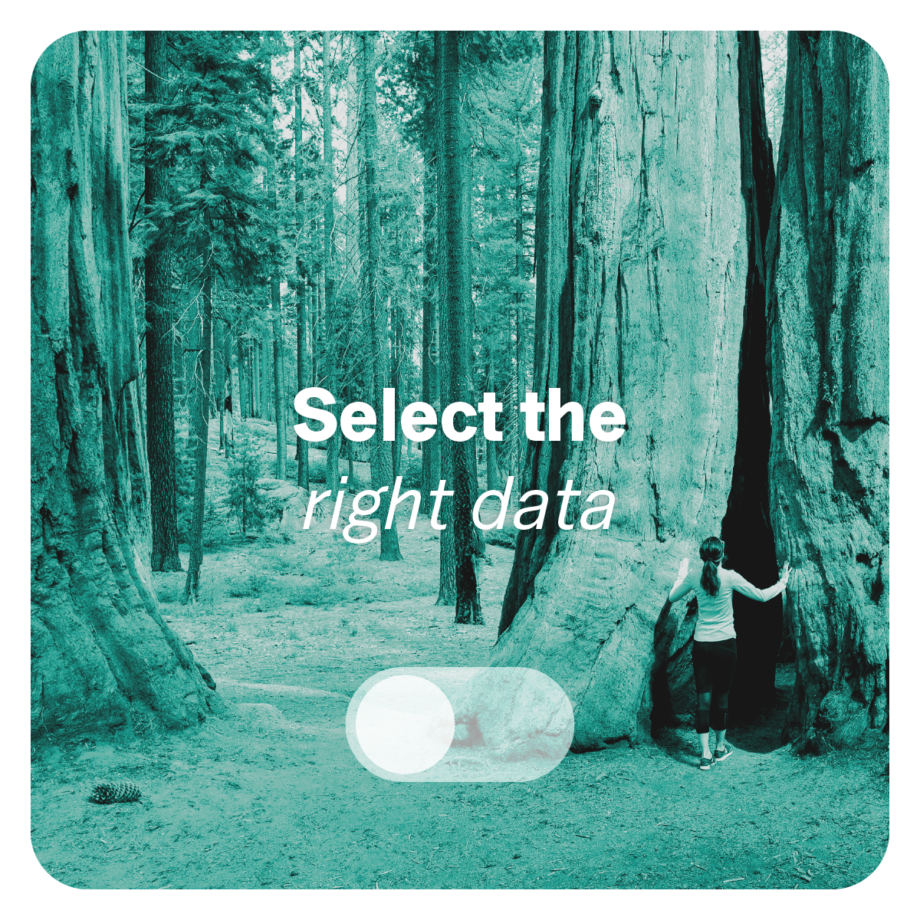
Storytelling through data
What is the first thing that comes to mind when you hear the word ‘storytelling’? We almost want to eat our old hat that it’s not ‘data’ or ‘statistics’.
That’s a bit of a shame, though, because with the right effort, data and storytelling can go hand in hand and end up being an effective part of your social media strategy.
A trip to the gym is healthy. That sounds very good, but you probably already knew that. That’s why it’s not something that sends you straight to the nearest gym to subscribe to a membership. It might do if it sounded like: 3 trips to the gym give visible results.
(NB: imaginary example, put on point. So, no need to run to the gym now – stay and read on instead).
We’ll show you how to get the most out of your data and storytelling.


What is storytelling through data – and why should you use it?
Storytelling through data uses statistics and facts to build a compelling and engaging narrative. In other words, numbers are used to support and validate the message of the story.
Data gives your stories an extra touch of credibility because you are offering the reader proof of your statements. And by combining it with storytelling, you can make complex things easier to digest for your audience.
Most people use social media to find entertainment – so let users encounter your statistics and numbers in a way that speaks to them: through storytelling.
5 steps to effective storytelling through data
1. Identify and understand your audience
To know which story and which data to use, you will need to clarify who your audience is – and not least try to understand them. Only then can you develop data-based storytelling that resonates with them.


2. Find reliable data sources and cite them
The data you use must be true. Quite simply.
It is therefore also of great importance where your data comes from. By using trustworthy, verified and professional sources, you reduce the risk of spreading misinformation and getting ripped off. With good sources, you emphasize to users that your brand is both trustworthy and responsible. And finally, don’t be afraid to be transparent with your sources: cite them – it only emphasizes the credibility of the brand.
If you use data from internal sources, double-check that the numbers are correct.
3. Select the right data
Not all data is suitable for storytelling. Therefore, it is about being selective about the numbers you share as part of your storytelling. The data you choose must make sense for the story you want to tell and the audience you want to reach.
For example, if you want to tell a story about more people replacing treadmills with runs in nature, you can appropriately add data that illustrates this – perhaps even data that supports why it is beneficial for running. Which data you use is determined by what story and message you want to convey.


4. Create a clear narrative
Data can be a difficult quantity, but if it is wrapped in a story, it can arouse emotions, build trust and help your brand stand out.
Start by thinking about what the data you want to convey is of importance and what you want to tell users. Then use the data to support that message.
Create context, share your data and end with something users can act on. For example: “X number of our guests give our trips 5 stars – book a trip and find out why”. This way, users have no doubt about what you want or what they should do with your message.
5. Design compelling images and video
The brain is significantly faster at processing visual impressions than text – in fact up to 60,000 times faster. As a bonus, it remembers things better when presented with a visual element. Therefore, you can benefit from putting effort into creating engaging and appealing images and videos that can support and illustrate your data and story.

3 tips for more engaging content

Catch attention from the start
The first impression is crucial, so make sure it is something that catches the users’ attention. Maybe an emotional anecdote or a surprising statistic. Consider which part of your content is most engaging and let that part be the first thing that users encounter.

Make the complex simple
Too many numbers can quickly seem overwhelming and complex. Therefore, you can benefit from breaking your data down into smaller, more digestible bites. Instead of presenting a number in kilos, liters or similar, you can, for example, present it in something that is related to your brand. If you work for a baker, the number can be calculated in the number of flour sacks.

Humanize your data
By comparing data with stories from real life, you make the numbers more human and relatable. For example, if you share how many 5-star reviews your business has received, also share a few examples of reviews. Once again, it supports your narrative about your brand as transparent and trustworthy.